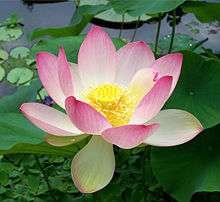Pond liner
A pond liner is an impermeable geomembrane used for water retention, including the lining of lakes, garden ponds and artificial streams in parks and gardens.
Installing a Pond Liner
Pond liners need to be protected from sharp objects (for example, stones) below the liner and from being punctured by any objects in the water body. Protection can be provided with layers of sand, concrete, fiber-matting and other materials. Pond liners are manufactured in rolls. Strips of liner can be seamed or welded together on site; and a number of flexible types, such as PVC and EPDM, can have their panels pre-fabricated together in the factory to fit the design shape of the pond.
The edge of the pond liner can be rolled over and secured in a trench or it can be fixed to a vertical wall made in brick or concrete. Box-shaped pond liners can be made for rectangular structures. The vast majority of flexible pond liners available commercially are manufactured of EPDM, butyl rubber or PVC, with EPDM being the most popular at the moment due to cost. A newer method involves a spray-based coating known as polyurea, and though the cost of using polyurea is considerably higher than flexible sheets, the lifespan of the material may be much longer than any other. The oldest material used for pond liners are made of clay which can be spread and mixed directly into soil to seal a pond. Clay has the longest life span of all pond liners due to its inert mineral composition that can remain stable for thousands of years.[1]
